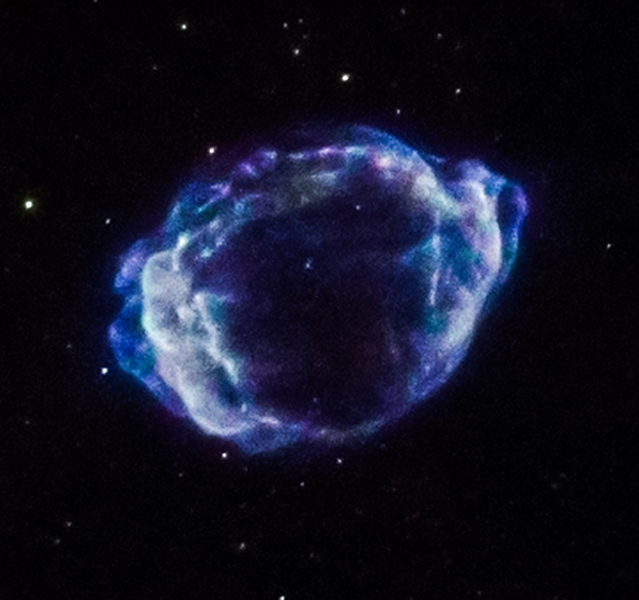
 Credit: NASA/CXC/CfA/S.Chakraborti et al.
Credit: NASA/CXC/CfA/S.Chakraborti et al.
Type Ia Trigger
Type Ia supernovae are produced by the sudden thermonuclear detonation of a white dwarf (the spent stellar core left behind when stars like the Sun run out of nuclear fuel). White dwarfs are tiny, about the size of earth, but they contain as much mass as the Sun, and so are incredibly dense. White dwarfs are usually composed almost entirely of carbon (and so can be thought of as planet-sized diamonds). Because carbon at these extreme densities is potentially explosive, white dwarfs are unstable; if the white dwarf gains enough mass, the carbon can ignite, destroying the entire white dwarf in seconds. Astronomers actually think this is a good thing, since exploding white dwarfs release a standard amount of energy, making them useful for measuring cosmic distances. Using observations of these white dwarf supernovae, astronomers have discovered perhaps the most mysterious phenomenon in the Univers, the co-called "Dark Energy" that appears to be causing the expansion of the Universe to accelerate. But what causes the white dwarf to explode in the first place? This is a controversial subject. A white dwarf could pull off material from a normal companion star, and it could accrete enough material to cause the white dwarf to explode. A competing model claims that most, if not all, of these white dwarf explosions are caused by the merger of two white dwarfs. Deciding which of these two mechanisms dominates is important, since the different mechanisms affect our determination of distances based on Type Ia supernova. Astronomers have shown that studying the remnant blast wave produced by the supernova can help determine which mechanism produced the supernova explosion in the first place. The image above is an X-ray image by the Chandra X-ray Observatory of a recent Type Ia supernova which occurred in the Milky Way. Comparing the X-ray data with radio data from the Very Large Array, astronomers have shown that this explosion was most likely produced by the merger of two white dwarfs.
Published: April 4, 2016
<
HEA Dictionary ● Archive
● Search HEAPOW
● Other Languages
● HEAPOW on Facebook
● Download all Images
● Education ● HEAD
>

Each week the HEASARC
brings you new, exciting and beautiful images from X-ray and Gamma ray
astronomy. Check back each week and be sure to check out the HEAPOW archive!
Page Author: Dr. Michael F. Corcoran
Last modified Monday, 26-Feb-2024 17:45:22 EST


